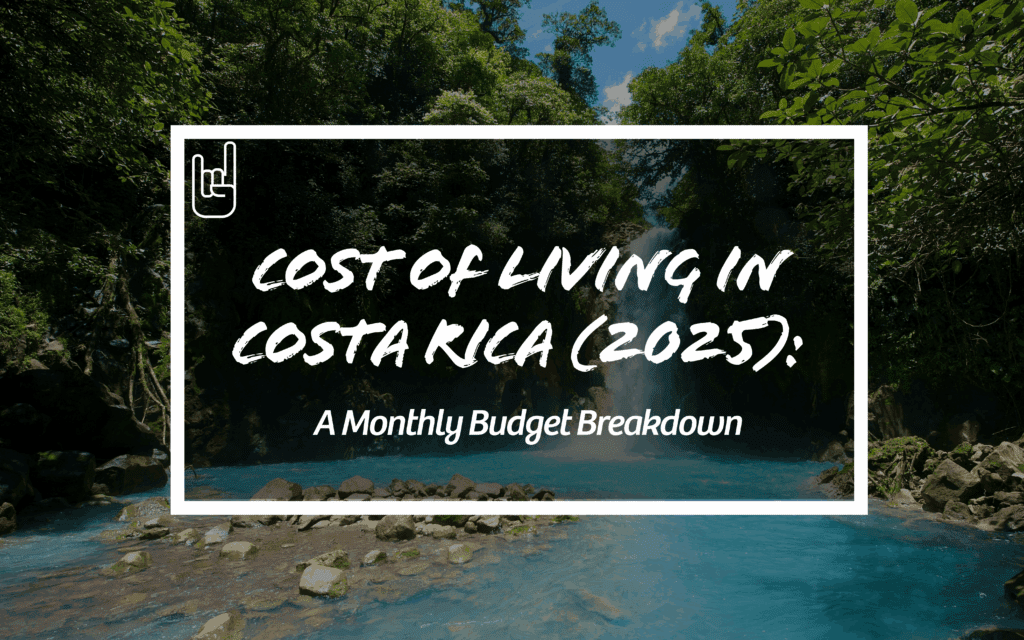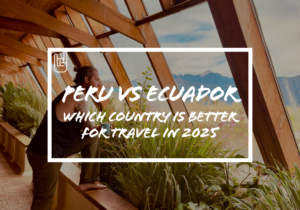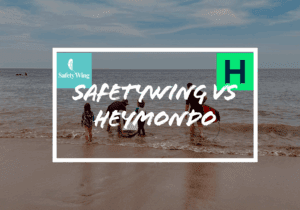Cost Of Living In Costa Rica (2025)
Planning a family move or slow travel adventure in Costa Rica? You’re not alone. From lush jungle villages to surfy beach towns, Costa Rica draws families and digital nomads alike but is it affordable in 2025?
About This Guide
We’re a real family of four preparing to slow travel through Costa Rica for two months in 2026 with backpacks, a budget, and two curious kids in tow. This guide pulls together 2025 data, personal research, and insights from digital nomads and families already living there.
It’s designed to help you budget smart, understand regional cost differences, and avoid hidden expenses, whether you’re planning a move, a sabbatical, or an extended stay.
How Much Does It Cost to Live in Costa Rica in 2025?
Costa Rica continues to attract families, digital nomads, and retirees chasing sunshine, safety, and a slower pace of life but what does it actually cost to live here?
For 2025, the average cost of living in Costa Rica varies widely depending on lifestyle and location. A single digital nomad or slow traveler might live modestly on $1,500–$2,200/month, while a family of four could expect monthly costs between $2,800–$4,200, excluding international flights and private schooling.
Here’s a quick snapshot:
| Traveler Type | Monthly Budget Range |
|---|---|
| Solo Traveler | $1,500 – $2,200 |
| Couple | $2,000 – $3,200 |
| Family of Four | $2,800 – $4,200 |
If you’re renting a 2-bedroom home, shopping at local markets, and keeping things simple, you’ll find Costa Rica surprisingly manageable, especially compared to North America or Europe. But add in international schools, car rental, imported foods, or resort living, and your costs rise fast.
We’ll break it all down: housing, food, transport, fun, and the unexpected extras most travel budgets forget.
Table of Contents
Housing in Costa Rica: What Can Families Expect?
Costa Rica offers a wide range of housing options depending on where you settle, your lifestyle needs, and your budget. From tropical beachfront villas to cozy mountain casitas, expat families can usually find something that suits both comfort and cost, though location plays a huge role.
In urban centers like San José, Heredia, and Escazú, modern apartments and gated communities are common. These areas typically offer conveniences like proximity to international schools, supermarkets, and hospitals.
A two- to three-bedroom apartment in one of these areas may range from $800 to $1,800 USD per month, depending on amenities and whether it’s furnished. In upscale neighborhoods or homes with full security and luxury finishes, prices can exceed $2,000/month.
On the flip side, families who settle in smaller towns or more rural areas, such as Atenas, Grecia, or parts of the Nicoya Peninsula will often find long-term rentals that are far more affordable. It’s not unusual to pay $400–$700/month for a family-sized home with a yard, though it might mean fewer creature comforts or needing to rely more on local services.
Utilities are typically separate. Electricity can run high if you use air conditioning regularly—expect $50 to $150/month depending on your usage. Internet is reasonably priced and widely available, with plans starting around $30/month for decent speeds.
Pro Tip: Long-term rentals are often negotiable, especially if you stay six months or more. Many landlords are open to reducing rent for responsible tenants who pay on time and care for the property.
Whether you’re aiming for a beach town like Uvita or a cloud forest haven like Monteverde, housing is likely to be your largest monthly expense but also where strategic choices can help stretch your budget.
This blog is fuelled by caffeine and chaos, if it helps, support our journey.
Grocery Prices in Costa Rica (2025)
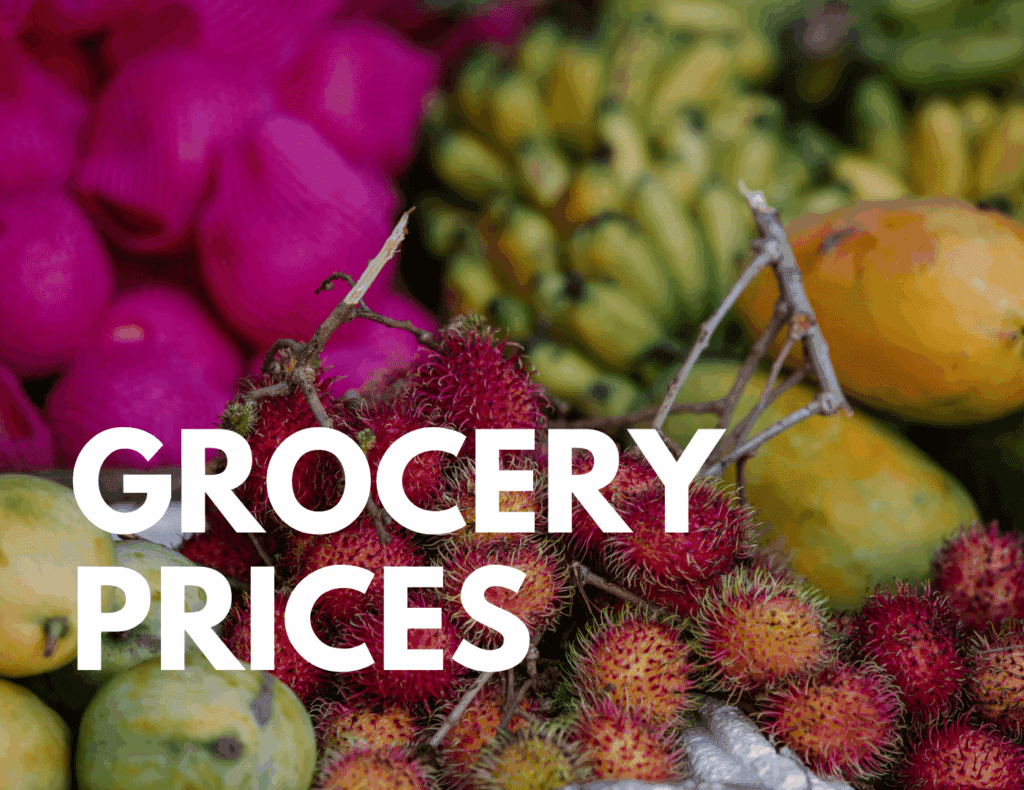
If you’re planning to cook at home while living or traveling in Costa Rica, good news grocery costs can be relatively affordable, especially if you shop like a local.
Local Markets vs Supermarkets
Local ferias (farmer’s markets) are your best bet for fresh produce at reasonable prices.
Expect to pay around $0.50–$1.00 USD per pound for fruits like bananas, mangoes, and papayas.
Seasonal vegetables like tomatoes, carrots, and onions usually range from $0.80–$1.50 USD per pound.
Supermarkets (like Auto Mercado or Walmart) are more convenient but come with higher prices, especially for imported items.
Pro tip: Buy your staples at the supermarket (like pasta, rice, and cleaning supplies), but get your fruit, veg, and eggs from local vendors for the best value.
Essentials & Pantry Staples
Here’s a quick look at common grocery items and average prices in Costa Rica (2025):
1 liter of milk: $1.25
1 loaf of bread: $2.00
1 dozen eggs: $2.50
1 kg of rice: $2.00
Cheese (local): $6.50/kg
Chicken breast (boneless): $5.00–$6.50/kg
Imported goods (like branded snacks, specialty milks, or foreign condiments) can be marked up by 30–50%, so budget travellers may want to adapt recipes or pack a few faves in their suitcase.
How Much Will a Weekly Shop Cost?
For a small family:
$60–$90/week if shopping smart at local markets.
$100–$140/week if relying mostly on supermarkets and imported products.
Cooking at home regularly is one of the best ways to stretch your budget in Costa Rica, especially in tourist towns where restaurant prices can spike during high season.
Getting Around Costa Rica: Transportation Costs (2025)

Costa Rica may look small on the map, but getting from beach to jungle or town to town, takes some planning. Luckily, transport options suit a range of budgets.
Public Transport: Cheap and Widely Available
Costa Rica’s public buses are incredibly budget-friendly, especially for families or long-term travellers.
City bus fare: typically $0.60–$1.00 USD one way.
Long-distance buses (e.g. San José to Tamarindo): $8–$12 USD, depending on the operator and route.
Note: Buses are safe and punctual, but limited luggage space and minimal A/C can make them tough with young kids or bulky bags.
Renting a Car in Costa Rica
If you’re planning to explore remote beaches, waterfalls, or cloud forests, especially outside peak areas renting a car is often the best bet.
Rental cost: Starts at $35–$50/day for a compact car, $65–$90/day for a 4×4 (recommended for rural areas).
Fuel prices (2025): around $5.75/gallon, among the highest in Central America.
Pro tip: Always factor in mandatory insurance, which can add $15–$25/day on top of rental quotes.
Taxis and Ride Shares
Taxis are regulated and metered in most towns.
Base fare: $1.00–$1.50
Short rides: typically $3–$7 USD
Uber is available in San José and surrounding areas, often cheaper than taxis.
Other Options
Shuttle services (shared or private) are common between tourist zones, budget around $40–$60 USD per person for inter-city routes.
Domestic flights (e.g. San José to Nosara): faster, but pricey, around $100–$150 USD one way.
✅ Family Tip: Renting a car gives you flexibility and is often more cost-effective than paying for multiple shuttles, especially if you’re travelling with kids or gear.
Eating Out in Costa Rica: What It’ll Cost You (2025)

From beachfront sodas (local eateries) to tourist-facing cafés, Costa Rica serves up options for every taste and budget.
But how much should you expect to pay?
Local Eats: Where the Deals Are
The best value? Sodas (No not the fizzy pop) small, family-run restaurants serving hearty Costa Rican staples like casado (rice, beans, meat, plantains, salad).
Casado plate: $4–$7 USD
Beverages (natural juice or soda): $1.50–$2.50
Breakfast with coffee: $3–$5 USD
✅ Family-friendly tip: Many sodas are super welcoming to kids and often serve dishes “sin picante” (not spicy).
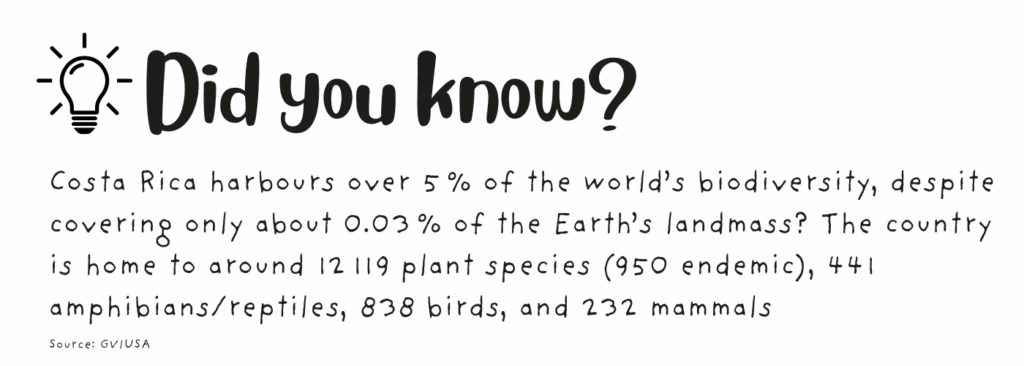
Mid-Range & Tourist Restaurants
In beach towns like Tamarindo, Santa Teresa, or La Fortuna, expect higher prices in tourist-facing restaurants.
Pizza or burger meal: $8–$14 USD
Seafood dishes: $12–$20 USD
Imported alcohol or cocktails: $6–$10 per drink
Prices climb during peak travel seasons (December–April), and in high-demand areas near surf beaches or national parks.
Trendy Cafés & Health Spots
Costa Rica’s wellness scene is booming, especially in expat-heavy towns.
Smoothie bowls, organic meals: $10–$15 USD
Barista-style coffee: $3–$5 USD
While not always budget-friendly, these spots often have great Wi-Fi, relaxed vibes, and play areas for kids, making them a good family reset stop.
🔁 Quick Tip: If you plan to eat out regularly, balance local sodas with the occasional splurge. Many travelers budget $15–$25 per day per person for eating out comfortably in Costa Rica.
How Much Does It Cost to Get Around Costa Rica?
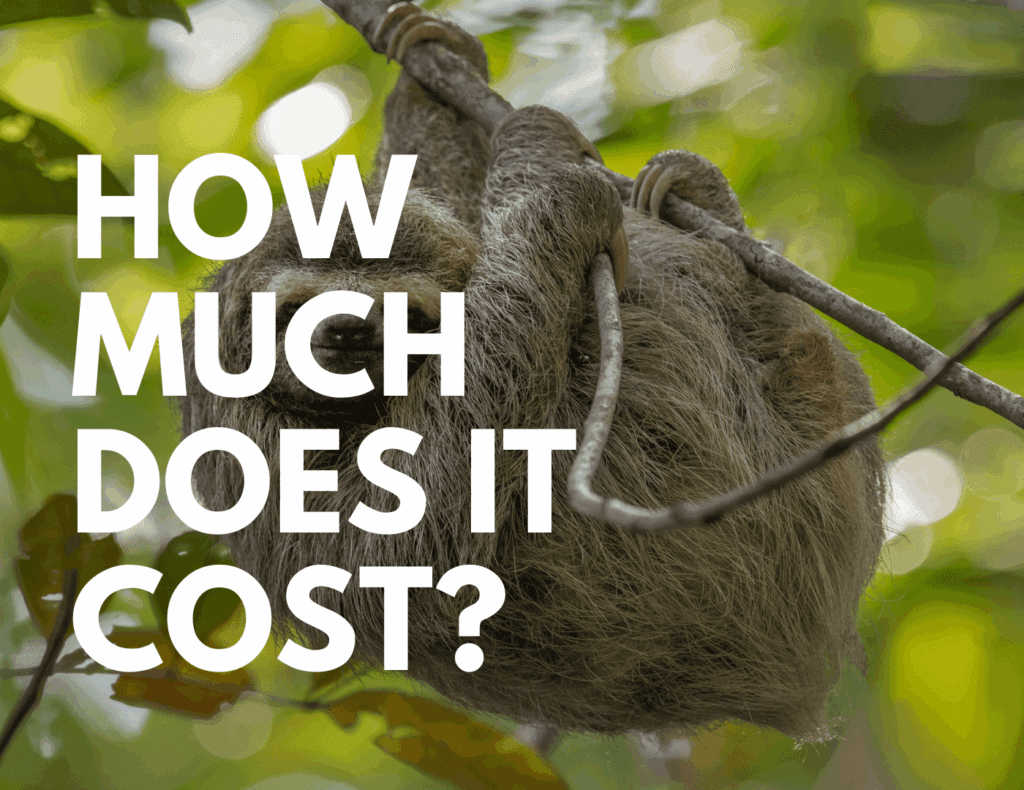
Costa Rica may be small, but getting from jungle to beach (and back again) can add up, especially for families. The type of transport you choose makes a big difference to your travel budget.
Public Buses: The Budget-Friendly Backbone
Public buses are incredibly affordable, with routes connecting major cities, coastal towns, and even national parks. Expect to pay around $1–$10 USD depending on distance. They’re reliable and safe, though not always the comfiest choice with kids or luggage.
Car Rentals: Best for Flexibility
For families or travelers with surfboards, strollers, or just a love for freedom, renting a car is often worth it. Prices average $35–$70/day, but keep in mind:
Insurance is mandatory (and often not included in quoted prices)
4x4s are helpful (or required) on rural and mountainous roads but pricey.
Gas prices are high around $5–$6/gallon (If you live in the UK then it does not sem so high)
Taxis & Rideshares: Use Selectively
Taxis are common in cities but rarely metered. Ask for a price upfront or stick with ride apps like DiDi in San José, which tend to be cheaper than traditional taxis. Short city rides typically cost $3–$10, but longer trips add up fast.
Domestic Flights & Shuttles
If time is tight or you’re traveling with little ones, shared tourist shuttles and domestic flights can ease the journey. Shuttles run $40–$60/person for common routes; short-haul flights (e.g., San José to Nosara) can be $80–$150 one way.
🔁 Quick Tip: Want to save and see more? Try combining public buses for short hops with car rentals in rural regions. It’s a sweet spot between budget and convenience.
Is Costa Rica Good for Working Remotely?
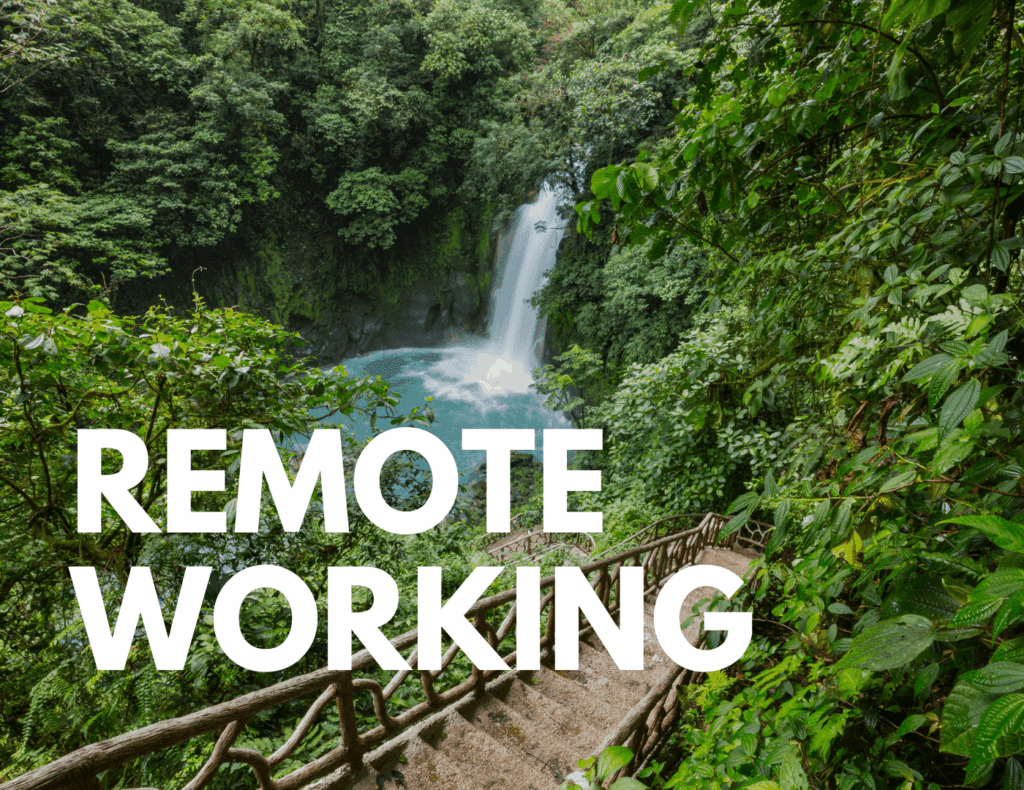
Costa Rica isn’t just for hammocks and howler monkeys, it’s increasingly remote work-friendly, especially in digital nomad hubs like Tamarindo, Santa Teresa, and parts of the Central Valley. But speed, signal, and cost vary widely depending on where you stay.
Internet Speeds & Wi-Fi Access
Urban areas like San José, Escazú, and Heredia tend to have the most stable internet. Expect:
Speeds of 25–100 Mbps in cities and co-working hubs
Reliable Wi-Fi in midrange to upscale hotels and Airbnbs
Spotty connections in remote beach towns (Santa Teresa, we’re looking at you)
Many cafés and hostels offer free Wi-Fi, but if you’re working to deadlines, you’ll want a strong personal backup.
Local SIM Cards & Mobile Data
Getting connected is easy and affordable. Main carriers include Kolbi, Claro, and Movistar, all offering prepaid options:
SIM card: $1–$3 USD
Monthly data plans: start at $10–$25 for 2–5 GB
Coverage is solid in populated areas, patchy in the jungle or highlands
Pro tip: Buy SIM cards directly from provider stores at the airport or in town, street sellers often charge extra or offer outdated packages.
Digital Nomad Visa: A Work-in-Progress
Costa Rica’s digital nomad visa allows remote workers to stay up to 1 year (renewable), but application processing can be slow. Most freelancers and digital nomads still use the standard 90-day tourist visa, doing a quick border hop for renewal.
🔁 Quick Tip: Booking an Airbnb? Message your host to ask for a screenshot of a recent speed test, saves headaches later.
What Are the Education Options for Families in Costa Rica?
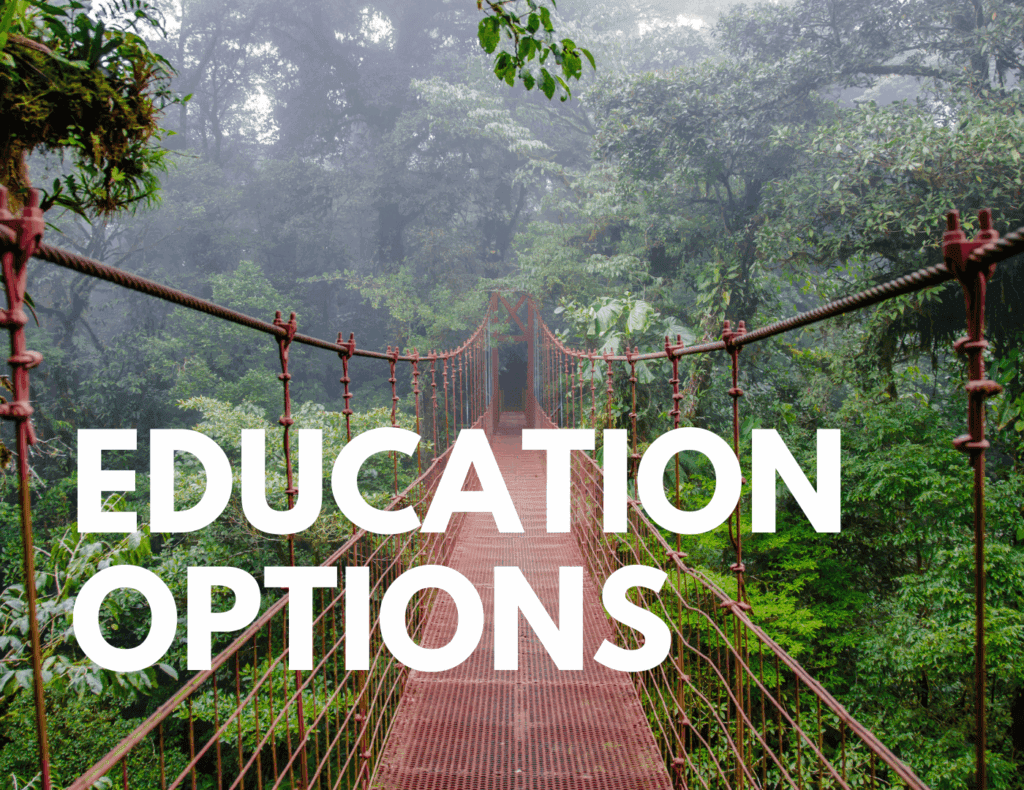
Costa Rica offers a mix of public, private, and international schooling options, ideal for expats and long-term travelers planning a family stay.
Public vs Private Schools
Public schools are free and follow the national curriculum. Spanish is the primary language, and resources can vary widely depending on the region.
Private schools (especially bilingual ones) are more consistent in quality and are popular with expat families. Many offer English-Spanish programs, international baccalaureate options, and extracurriculars.
Monthly costs:
Public school: Free
Private school: $300–$800/month depending on location and prestige
Top expat-friendly areas like Escazú, Santa Ana, Nosara, and Tamarindo have a strong presence of international schools.
Childcare & Daycares
If you’re traveling with toddlers or younger kids, you’ll find:
Daycare centers (guarderías) in most towns and cities
Nannies and babysitters, often available via local Facebook groups or expat networks
Costs range from:
Daycare: $200–$500/month
Part-time nanny: $5–$10/hour, depending on experience and language skills
Some families opt for childcare swaps or micro-schooling arrangements within the expat community, especially in slower-paced beach towns.
🔁 Quick Tip: Many international schools have waitlists — apply early and ask about short-term enrolment options if you're only staying for a few months.
How Do You Get Around Costa Rica as a Family?
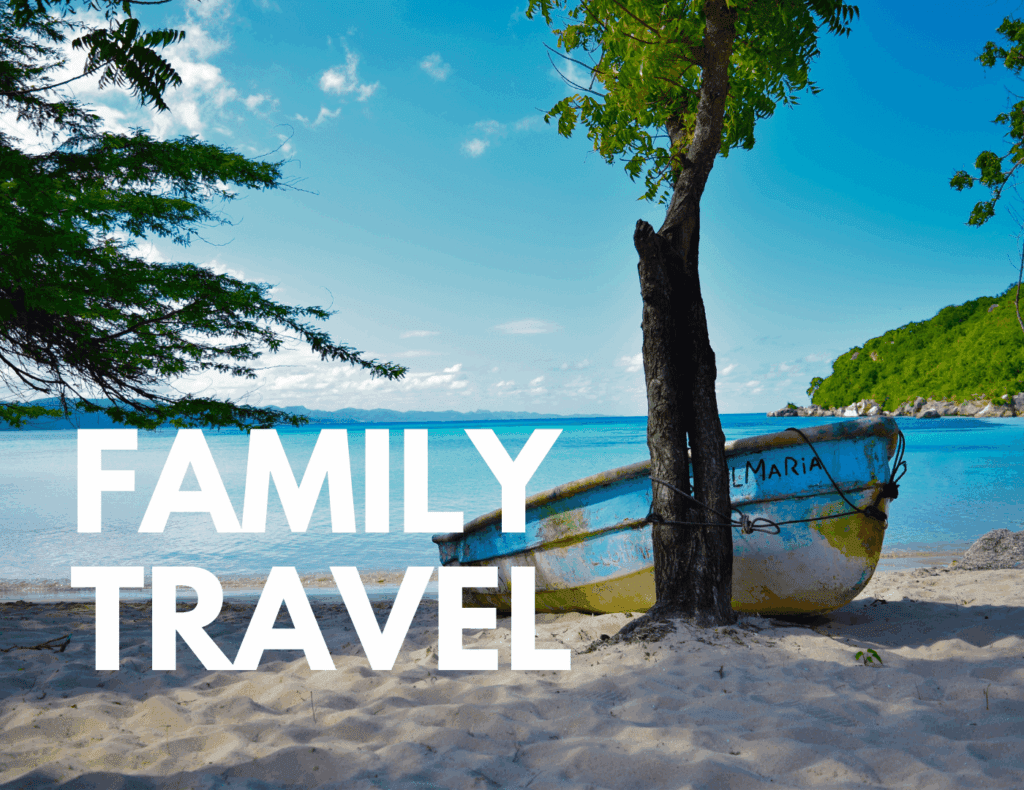
Transport in Costa Rica is surprisingly varied but what’s convenient for solo backpackers doesn’t always work for families. Here’s what to know.
Renting a Car: Freedom to Explore
Most families opt for a rental car, especially if visiting multiple destinations like La Fortuna, Manuel Antonio, and Monteverde.
Daily cost: $30–$70/day (depending on season, size, and insurance)
Pro tip: Always include mandatory local insurance, prices online often exclude it
Kid-friendly perks: Car seats available for rent, but bringing your own is more reliable
Driving gives you the freedom to stop for snacks, bathroom breaks, and scenic detours.

Public Transport: Budget-Friendly but Basic
Buses are widely available and very affordable, but:
They can be slow and crowded
Schedules aren’t always accurate online
Not ideal with strollers or lots of luggage
Still, for short intercity trips or budget-conscious families, buses work.
Private Shuttles: Comfort Without the Stress
Private or shared shuttles offer door-to-door service — great for airport transfers or long distances.
Costs: $25–$60 per person, depending on route and group size
Can be arranged via hotels, tour operators, or apps like Bookaway
🔁 Quick Tip: In rainy season (May–November), opt for 4x4 vehicles if you’re heading to off-the-beaten-path areas. Roads can get rough, especially near beaches or in mountain regions.
What Are the Best Things to Do in Costa Rica with Kids?

Costa Rica is one of Latin America’s most family-friendly destinations and not just because of its wildlife and beaches. Whether you’re travelling with toddlers or teens, here are experiences that deliver magic (without meltdowns).
Wildlife Watching in the Wild
Where: Manuel Antonio National Park, Tortuguero, Osa Peninsula
Why it works: Kids can spot sloths, howler monkeys, toucans, and sea turtles, no zoo required.
Tip: Hire a local guide with a telescope for the best up-close encounters.
Volcano Adventures in La Fortuna
Hike the base of Arenal Volcano, soak in hot springs, or explore lava trails.
Family-favorite: Ecotermales Hot Springs calm, clean, and perfect for younger kids.
Cloud Forest Walks in Monteverde
Think hanging bridges, butterfly gardens, and educational night tours.
Sky Walk trails offer just the right amount of adventure for little legs.
Beach Days on Both Coasts
Caribbean side (e.g., Puerto Viejo): calm waves and laid-back culture
Pacific side (e.g., Samara, Tamarindo): surfing lessons, sandcastles, and sunset strolls
Soft Adventures for Brave Little Souls
Ziplining in Selvatura Park (age 6+)
Horseback rides to waterfalls near Uvita
Beginner-friendly rafting on the Sarapiquí River
🔁 Quick Tip: Choose combo tours (like hanging bridges + waterfalls) to keep kids engaged without cramming the day. Breaks between activities = fewer tantrums and more smiles.
Is Healthcare Good in Costa Rica for Families?

Yes, Costa Rica is known for its strong public and private healthcare system, especially compared to many countries in the region.
Private vs Public Care
Private clinics (like CIMA and Clinica Biblica in San José) are modern and widely used by expats.
Public system (Caja) is available to residents and provides basic, low-cost care but with longer wait times.
Most travellers opt for private care, which is affordable and more accessible for short-term stays.
Pediatric & Emergency Services
Pediatricians are available in most urban areas.
Emergency care is good in cities but may be limited in rural or coastal areas.
Pharmacies (“farmacias”) are everywhere many with on-site doctors for minor issues.
Is Costa Rica Safe for Travel with Kids?
In general, Costa Rica is considered one of the safest countries in Central America.
What to Watch Out For:
Petty theft in touristy areas, keep bags zipped and passports secure.
Road safety driving standards vary; rural roads can be rough.
Wildlife & nature safety watch for jellyfish, ants, and signs warning about strong currents or snakes.
Should You Get Travel Insurance?
Absolutely. For family travel, comprehensive insurance is a must:
Covers medical care, trip delays, cancellations, and lost items
Look for plans with child coverage and adventure activity options (ziplining, surfing, etc.)
🔁 Quick Tip: Book accommodation with secure parking and avoid walking in dimly lit areas after dark, even in “safe” towns.
Sample Monthly Budgets for Families in Costa Rica

To help you compare, here are three example monthly budgets based on your travel style:
Budget Travel Family (2 adults + 2 kids)
Accommodation: $600 (basic home rental outside tourist areas)
Food: $400 (local markets + cooking at home)
Transport: $150 (local buses, occasional ride shares)
Activities: $100 (mostly free nature, some entrance fees)
Misc (SIM cards, snacks, etc.): $100
Total: ~$1,350/month
Mid-Range Family Travel
Accommodation: $1,200 (2-bed house/apartment in beach town)
Food: $600 (mix of restaurants + groceries)
Transport: $250 (rental car for part of trip)
Activities: $300 (national parks, guided tours, surf lessons)
Misc: $150
Total: ~$2,500/month
Digital Nomad Family Setup
Accommodation: $1,800 (well-equipped Airbnb with Wi-Fi)
Food: $800 (mostly eating out, some meal delivery)
Transport: $300 (longer-term car rental)
Activities: $400 (organised excursions, classes)
Coworking/schooling: $400
Total: ~$3,700/month
Final Thoughts: Is Costa Rica Affordable for Long-Term Travel?
Costa Rica isn’t the cheapest country in Central America but it delivers strong value for families, especially in terms of safety, nature access, and healthcare. Prices are higher than Nicaragua or Guatemala, but with a more developed infrastructure and easier day-to-day logistics.
If you’re seeking jungle adventures, beach towns, and bilingual schooling or work-life balance as a remote family, Costa Rica can be a great fit.

